We're calling 2023's biggest trend: curves in the kitchen – designers show how to include them in yours
From sweeping kitchen islands to elegant arch architecture, explore how curves are taking center stage in kitchen design
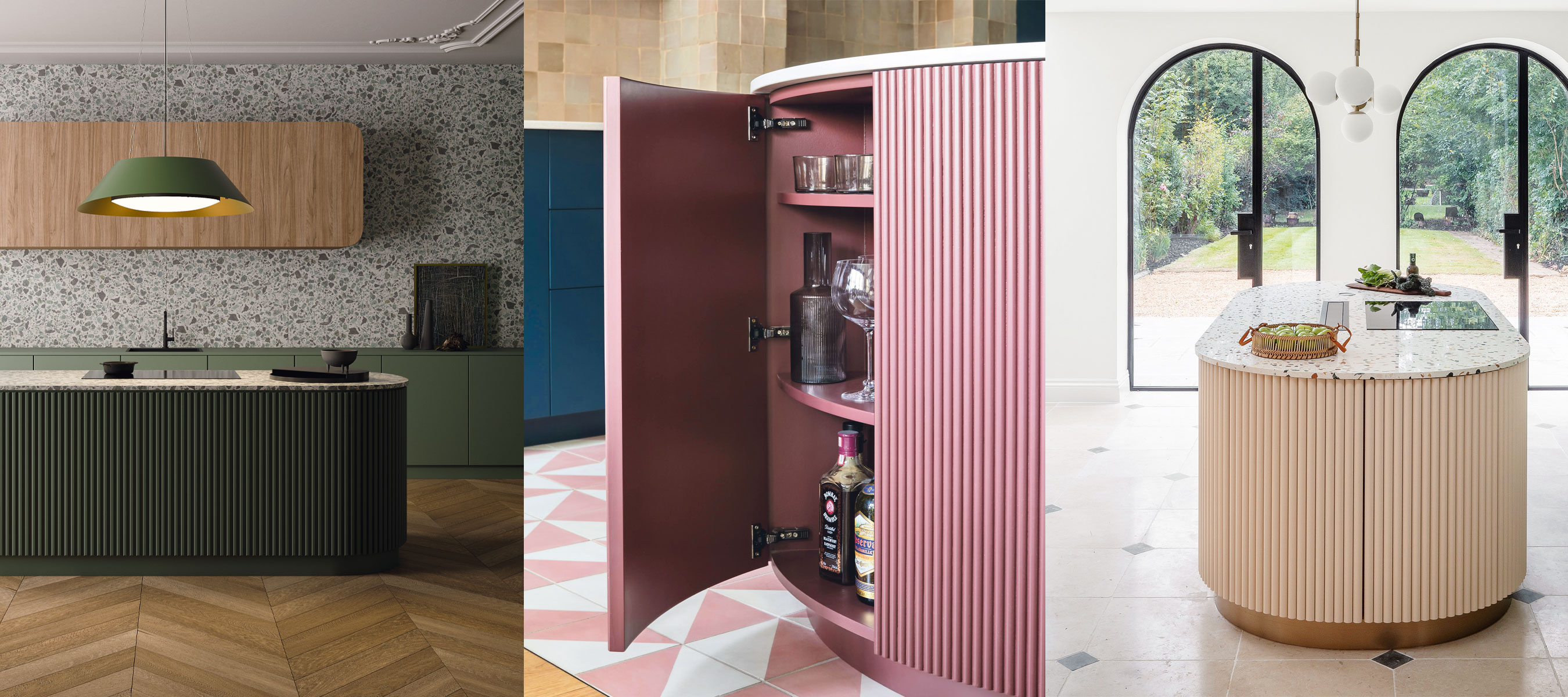

A kitchen is a space often associated with sleek, sharp lines and a more functional approach to interior design, however, we are seeing many designers embrace more interesting, engaging shapes and softer silhouettes.
Cue: curves.
One of the biggest kitchen trends of this year, it's fair to say that curves are everywhere, from furniture to architecture, lighting and more. For your kitchen ideas, these curved designs can be used to establish a more welcoming, organic and cozy atmosphere, transforming a traditionally streamlined space into one that's sinuous and elegant.
How you can bring beautiful curves into your kitchen
'Using curved lines within a home offers a wealth of benefits, including the potential to add both flow and dynamism,' says interior designer, Charu Gandhi.
We have spoken with a collection of designers who share some of their favorite curved kitchen design ideas, and provide expert advice on how best to integrate curves into the kitchen – and why this trend is here to stay.

Charu Gandhi is the founder & director of Elicyon. Charu Gandhi is a qualified Architect, registered with RIBA and ARB, who studied and taught at the Architectural Association.
1. Add arches through architecture
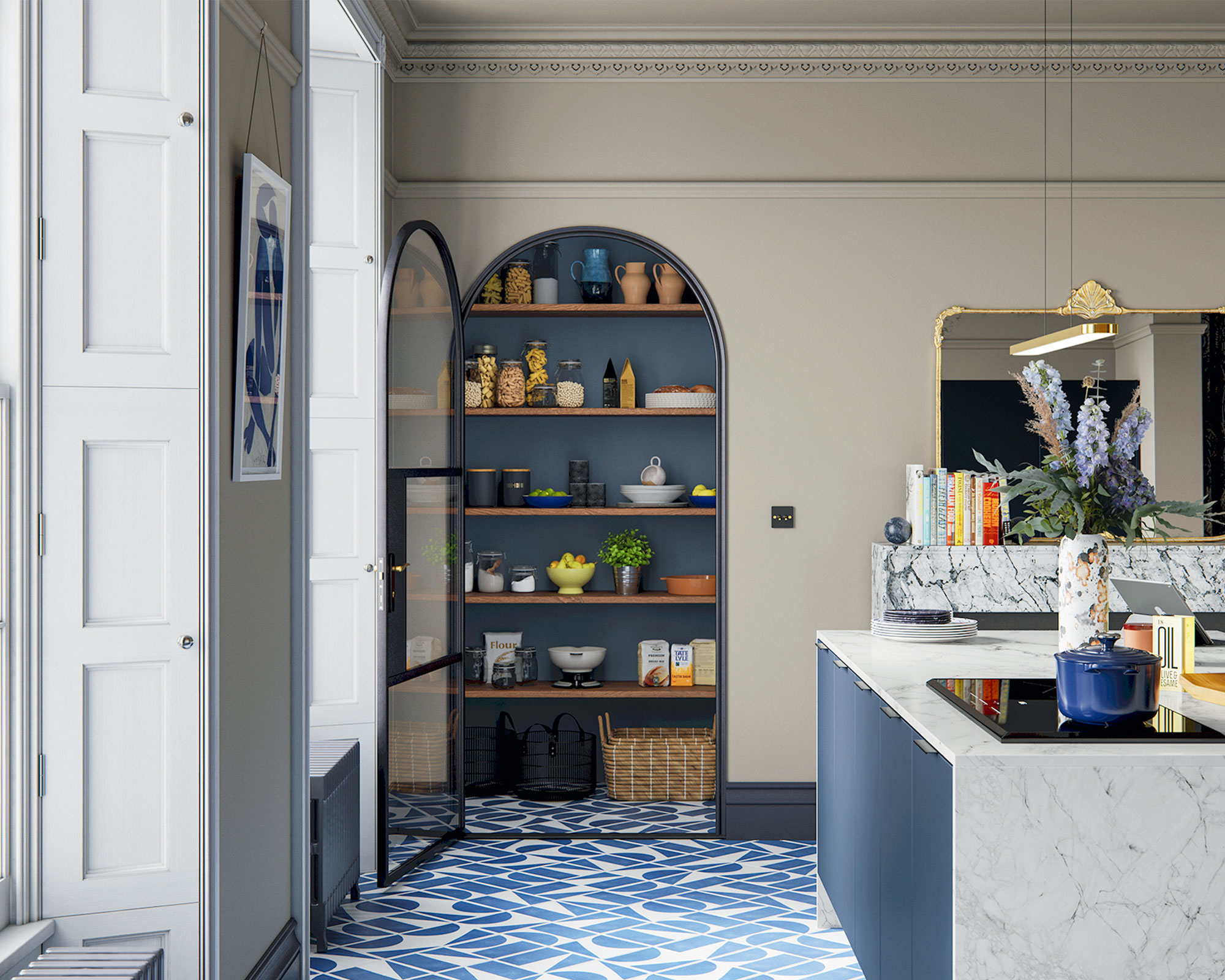
Hoxton kitchen in Metallic Midnight, Magnet
Arches are traditional, architectural features that have been used across building design for thousands of years. The popular resurgence of archways in interior design, from windows to alcoves, doorways and more, is helping to make our spaces look and feel softer, and unique.
'Curves are having a moment – and it only takes one to turn simple storage into a special feature,' says kitchen expert and writer, Linda Clayton.
Design expertise in your inbox – from inspiring decorating ideas and beautiful celebrity homes to practical gardening advice and shopping round-ups.
In this beautiful, modern kitchen (above), the luxurious larder has been elevated by a striking arch doorway; a simple yet beautiful design detail that creates an eye-catching focal point.
‘An arched pantry is an interesting accent, softening lines and adding character,’ says Jen Nash, design excellence manager, Magnet.

Linda graduated from university with a First in Journalism, Film and Broadcasting. Her love for interiors began when she bought her first utter wreck of a home two decades ago, and she realized writing about interiors would make her far happier. She has been working for Homes & Gardens, then sister-brands Livingetc, Country Homes & Interiors and Ideal Home, since 2006, covering all manner of interiors topics, though kitchens and bathrooms are her specialism.
2. Create a centerpiece round kitchen island
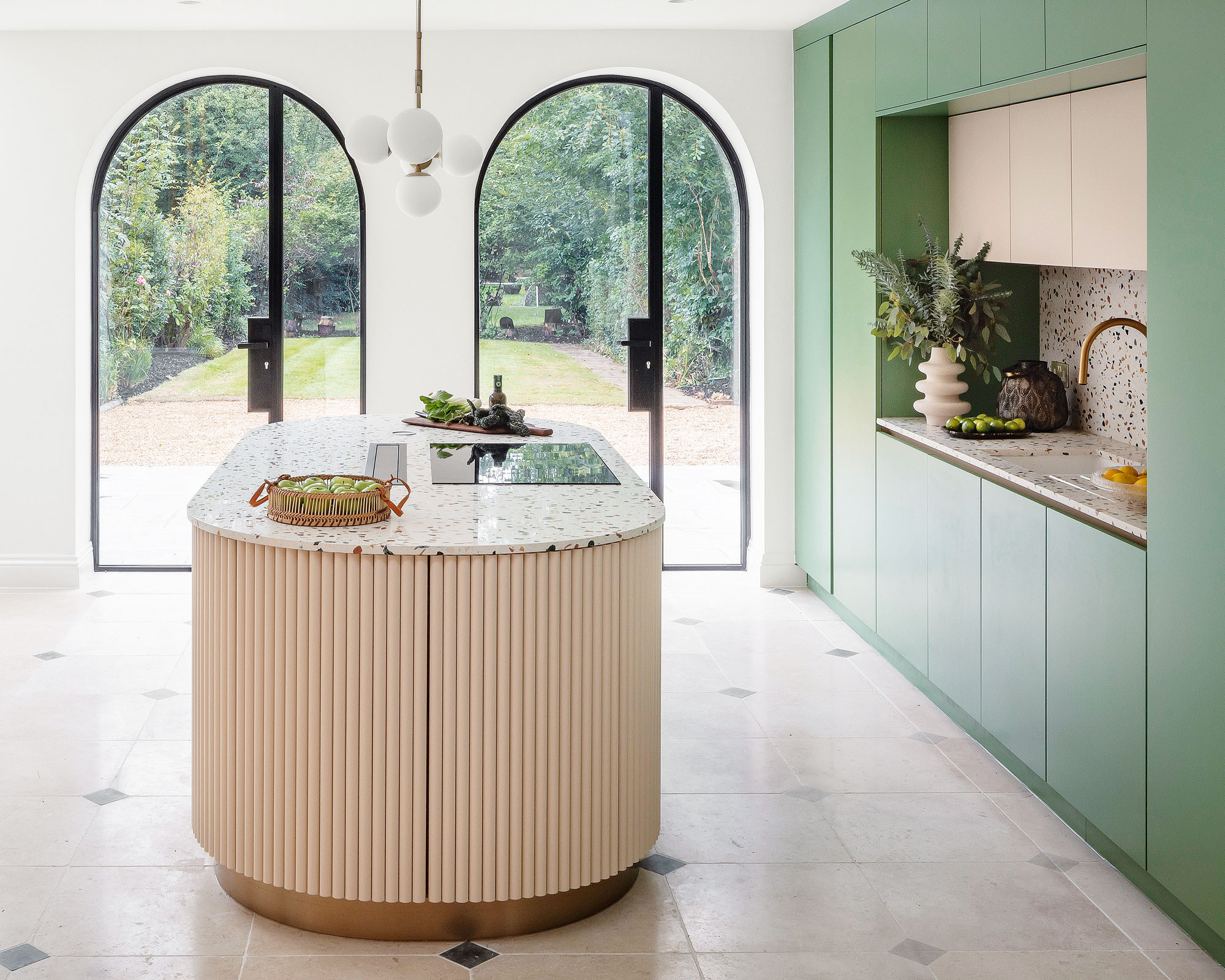
Bespoke painted kitchen with fluted island and terrazzo, Sheraton Interiors
Activate the ergonomic benefits of curves to get the party flowing, and embrace a rounded kitchen island shape.
‘A rounded island comes into its own when entertaining, especially in entertainment kitchens with multiple entrance/exit points, making it easier for guests to socialize and encouraging smooth transition between spaces,’ says Shehryar Khan, director, Sheraton Interiors.
‘A curved kitchen island can also include a more expansive seating area, allowing guests to comfortably eat and socialize around the space.’
We love this curvaceous kitchen island design, and how the two beautiful arched windows mirror the island, establishing a cohesive and connected space.

Shehryar Khan is the director of the London-based kitchen and design brand, Sheraton Interiors; a family-owned business with over 15 years experience of in designing and installing exquisite bespoke kitchens.
3. Round off a peninsula with curves
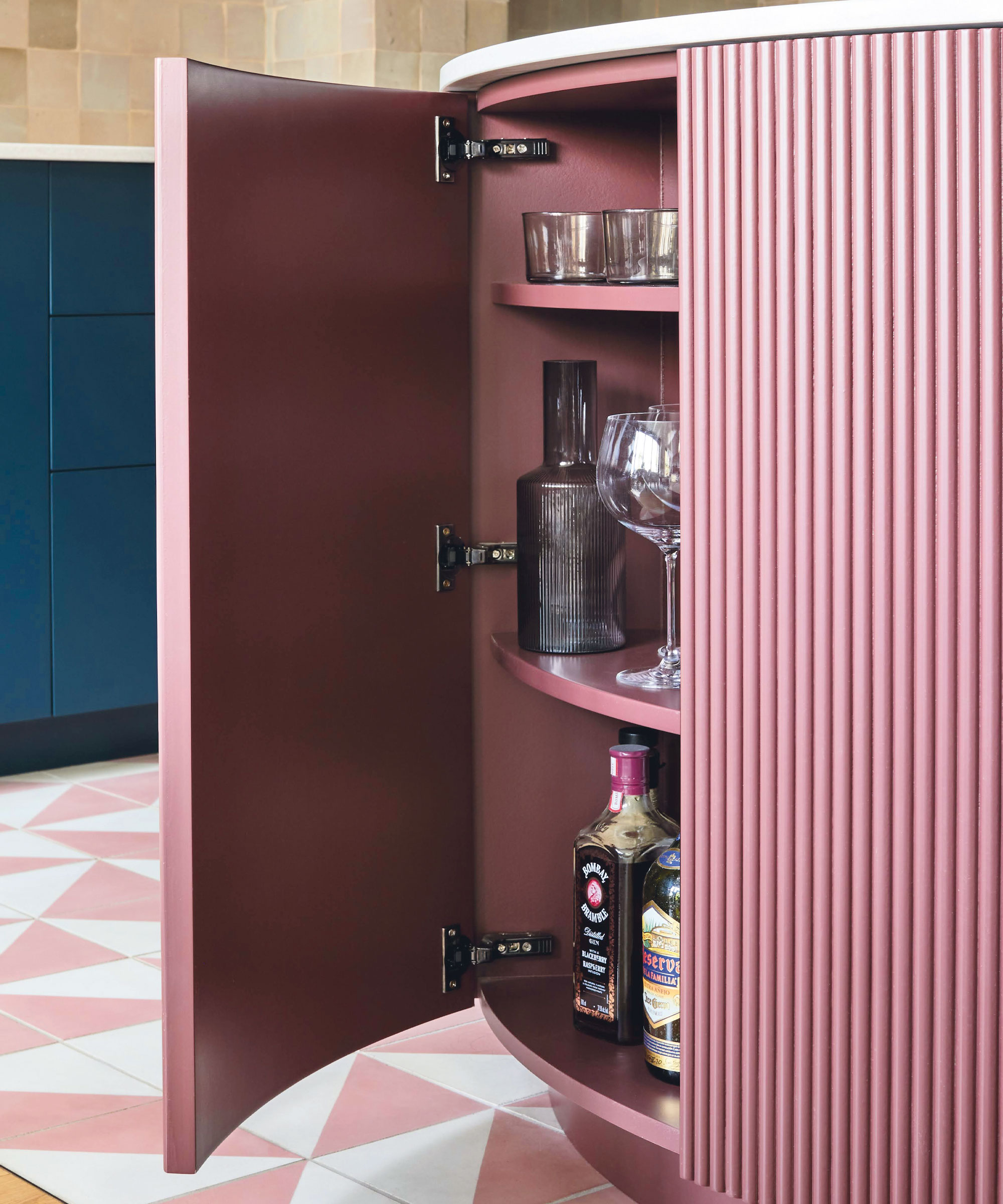
Bespoke kitchen, Hølte. A New Day Studio.
For a real design statement and break away from the norm, why not put a curve at the end of a peninsular island? It's a softer, more space-enhancing way to design a kitchen.
‘This design brings a playful edge to entertaining, as the curved, fluted doors open to reveal a cocktail cabinet,’ says interior designer, Andrew Griffiths.

Founder of London-based interior design firm, A New Day, Andrew is known for creating thoughtful spaces that improve how you live, and that bring a smile to the face.
4. Match curves with cocooning furniture
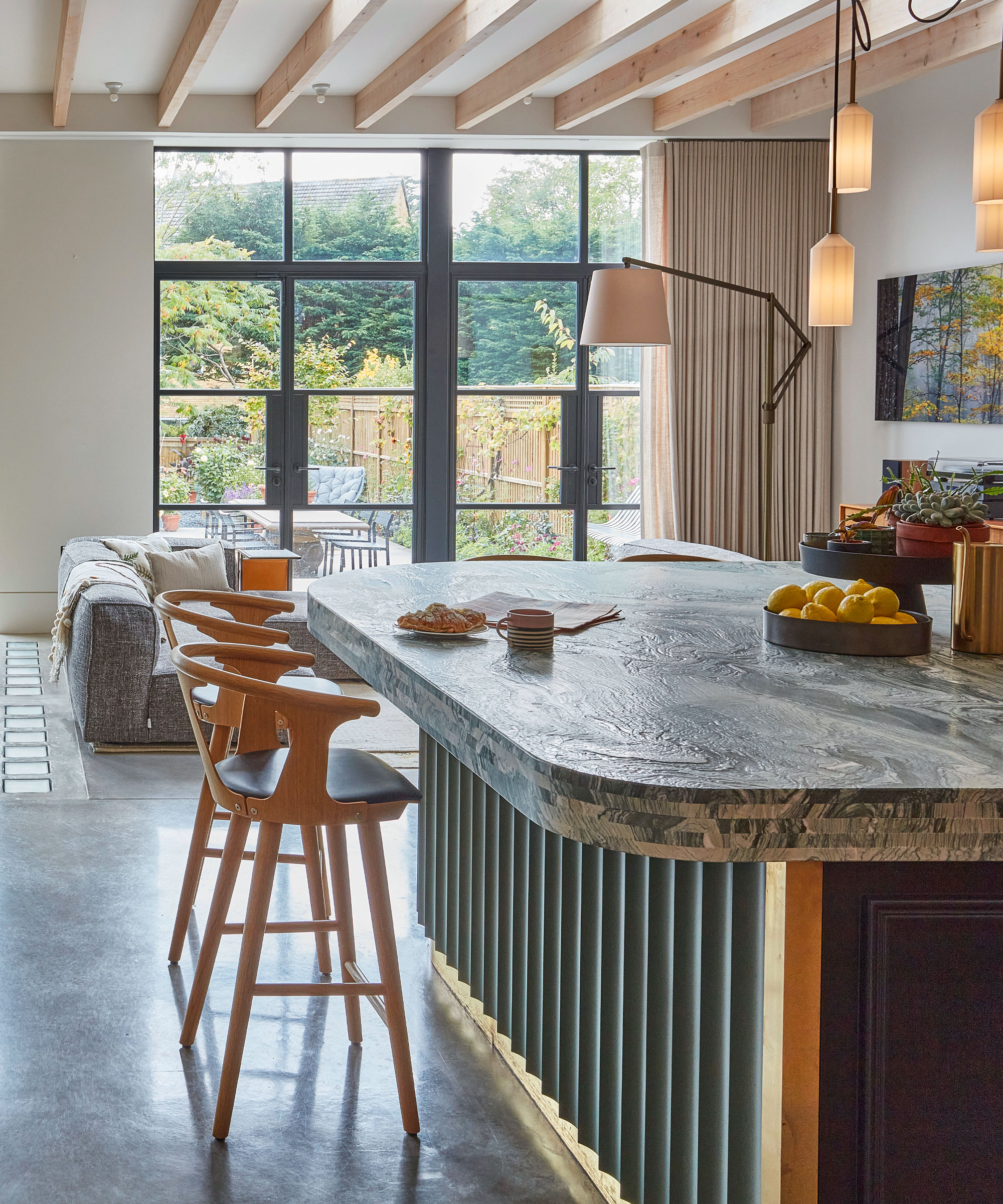
Bespoke kitchen, Blakes London.
As we have explored, using curves in interior design is known to make a space feel more cozy and inviting, so when deciding on your kitchen seating ideas, know that curvaceous, cocooning designs will only make the space feel more relaxing and welcoming.
In this kitchen by Blakes London, the large island has been paired with a set of &Tradition In Between stools, which feature an elegant, curved seat. The fluting on the kitchen island also creates a wonderful sense of rhythm and repetition, which elegantly mirrors the statement, rounded marble countertop.
Lead designer, Annie Ebenston, says of the design, ‘Angular flutes can bring a bold aesthetic, tight reed-like forms are subtler and large scallops will emphasize shadow and shape.'

Annie has worked with Blake's London as a leader designer and project manager since 2017, with prior experience working as a designer at Roundhouse. Annie has a PGDip in Interior Architecture from the Inchbald School of Design and is an experience designer of considered, functional and, beautiful kitchens.
5. Add curvaceous with lighting and accessories
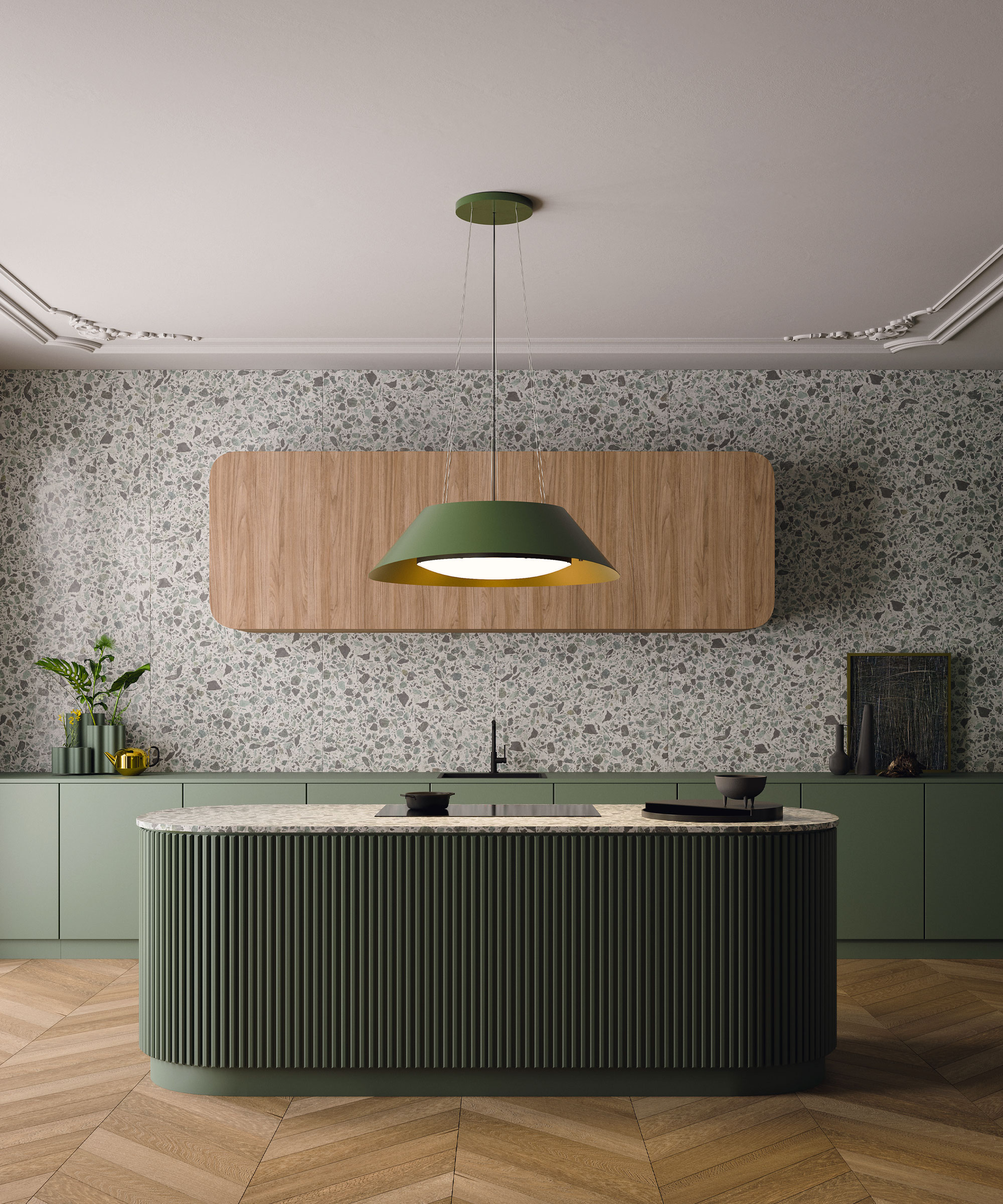
Vogue 88cm-wide pendant extractor, Falmec
A simple way to add curves to your kitchen without redesigning the whole space is through your lighting and accessory choices.
In this beautiful green kitchen, curves have been used across the cabinetry and island, but the striking, round pendant light truly takes center-stage... and all is not what it seems with the kitchen lighting ideas in this space.
A design from Falmec UK, the Vogue pendant is an innovative light and extractor fan all in one, creating a modern, streamlined design that can fit in beautifully with the style of a contemporary kitchen.
Sean Drumm, managing director at Falmec says, 'These designs provide powerful extraction and task lighting and are ideal for creating a discreet kitchen with the relaxed feel of a living room.'
FAQs
What is a curved kitchen?
As we have explored in this piece, a curved kitchen is one that embraces more organic, free-flowing and curvaceous forms.
From the shape of your kitchen island and countertops, to your cabinetry and lighting, embracing curves in the kitchen can create an overall softer and more distinctive finish in the space.
Curves also celebrate more retro looks of the past; with the revival of a '70s style having a huge influence on design trends of recent years.
A curvaceous kitchen is one that really invites you to move through and use the space in a more relaxed and sociable manner.
As interior designer, Patricia Urquiola states, 'Edges delimit and mark out a space – avoiding them enlarges the inhabitants’ freedom.'
Curves can help to transform a kitchen, an environment synonymous with practicality and functionality, into a space that feels more comforting, cozy and decorative.

Zara joined Homes & Gardens in February 2022 as a Content Editor. After studying English Literature at University, she worked as an Ecommerce Website Editor, Content Writer and Buying Intern at multiple independent businesses within the luxury retail and lifestyle sectors. Her role at Homes & Gardens unites her love, experience and passion for the world of design and desire to create inspiring written content. She enjoys nothing more than discovering new trends, brands and products, whether that be in fashion, interior design or lifestyle.